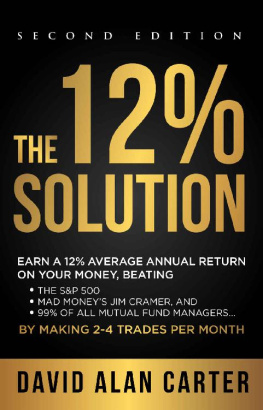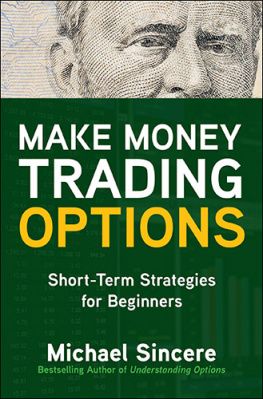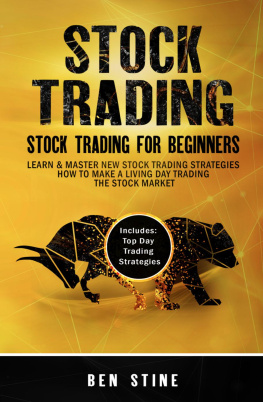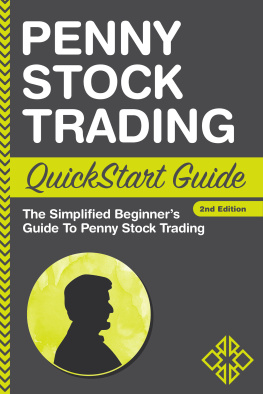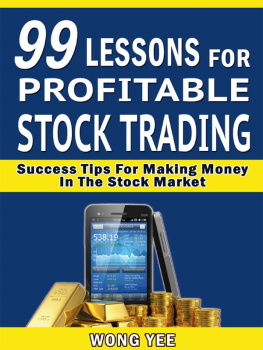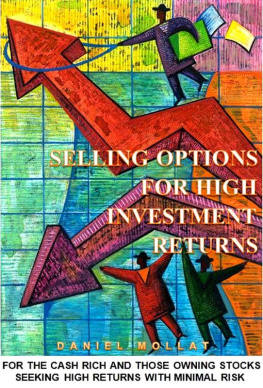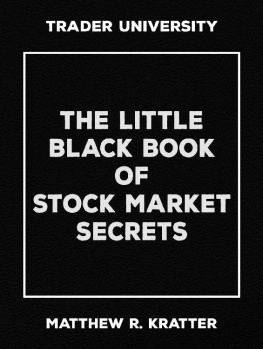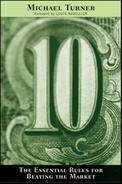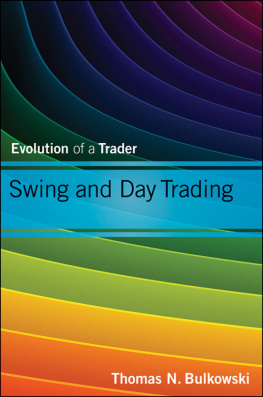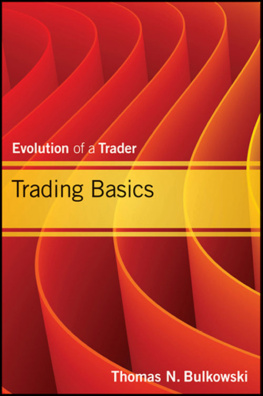David Alan Carter - Stock Market Cash Trigger: Learn A Simple Technique That Tells You When To Go To Cash
Here you can read online David Alan Carter - Stock Market Cash Trigger: Learn A Simple Technique That Tells You When To Go To Cash full text of the book (entire story) in english for free. Download pdf and epub, get meaning, cover and reviews about this ebook. genre: Business. Description of the work, (preface) as well as reviews are available. Best literature library LitArk.com created for fans of good reading and offers a wide selection of genres:
Romance novel
Science fiction
Adventure
Detective
Science
History
Home and family
Prose
Art
Politics
Computer
Non-fiction
Religion
Business
Children
Humor
Choose a favorite category and find really read worthwhile books. Enjoy immersion in the world of imagination, feel the emotions of the characters or learn something new for yourself, make an fascinating discovery.

- Book:Stock Market Cash Trigger: Learn A Simple Technique That Tells You When To Go To Cash
- Author:
- Genre:
- Rating:5 / 5
- Favourites:Add to favourites
- Your mark:
Stock Market Cash Trigger: Learn A Simple Technique That Tells You When To Go To Cash: summary, description and annotation
We offer to read an annotation, description, summary or preface (depends on what the author of the book "Stock Market Cash Trigger: Learn A Simple Technique That Tells You When To Go To Cash" wrote himself). If you haven't found the necessary information about the book — write in the comments, we will try to find it.
Step 1: See it coming.Step 2: Get out of the way.
In a radical departure from old-school investment advisors whose clients lost their shirts in 2008, a former day trader demonstrates a DIY market timing model that gets you out of dangerous securities before they can drag down your life savings due to...
--Stock Market Crashes--Bursting Bubbles--Bear MarketsBuy and Hold works... until it doesnt.If you held only A-list stocks in 2007, your portfolio was still cut in half the very next year. Unless youve got a 30-year horizon that affords you the privilege of waiting out the bad times, you need a different approach.
A trading system with no emotion.The Stock Market Cash Trigger is a mechanical model that takes emotion out of the mix. It automates decision making, and requires no special tools or software. Other timing models with proven track records are often built around proprietary algorithms and offered up as subscription alerts to the tune of $50, $75, $100 or more per month.
All you need here is a computer, the chart page that comes bundled with your online brokerage account, and 5 minutes of your time a month.
If you invest in stocks or ETFs, you can dramatically improve your returns.More than just protection, this model will show you how to profit from corrections, crashes and bears.
-- Like Microsoft? If you had held it during 2008, you would have been down -44%. Had you employed the Stock Market Cash Trigger, you would have been up +27% that year.
-- Like Exxon? From 2000 to 2017, you could have doubled your total return vs. buy-and-hold.
-- Prefer an ETF? Buying and holding QQQ for the past 17 years would have gotten you a +91% total return. Trading QQQ based on the Stock Market Cash Trigger would have generated +1,050%.
Yes, these are backtested returns, and theres no shortage of critics of backtesting. For that matter, theres no shortage of critics of mechanical trading systems, either. For the record, most investors would be well advised to buy wisely (that is, buy broad-market ETFs) and hold on for dear life.
But if you cant? If youre time horizon isnt 30+ years? If you dont have the fortitude to ride markets up and then down, up and then down, ad nauseam? Then maybe you owe it to yourself to explore a simple method that reduces risk and volatility in your portfolio, and lets you sleep soundly at night without worries of market bears or bursting bubbles.
A note from the author.The Stock Market Cash Trigger is not magic and its not rocket science. Its a technique hiding in plain sight on the simplest of stock charts.
I didnt invent it, I just gathered up the puzzle pieces that were there on the floor all along; eliminated those that didnt fit, put the pieces that did into a structure, and verified results through backtesting.
See if it doesnt open your eyes like it did mine. --DAC
Is a market crash coming?We all know the answer to that. Just a matter of when. Get ahead of the inevitable and start protecting your investments today.
Look below for GET A COPY and select the Kindle or Amazon button.
David Alan Carter: author's other books
Who wrote Stock Market Cash Trigger: Learn A Simple Technique That Tells You When To Go To Cash? Find out the surname, the name of the author of the book and a list of all author's works by series.

